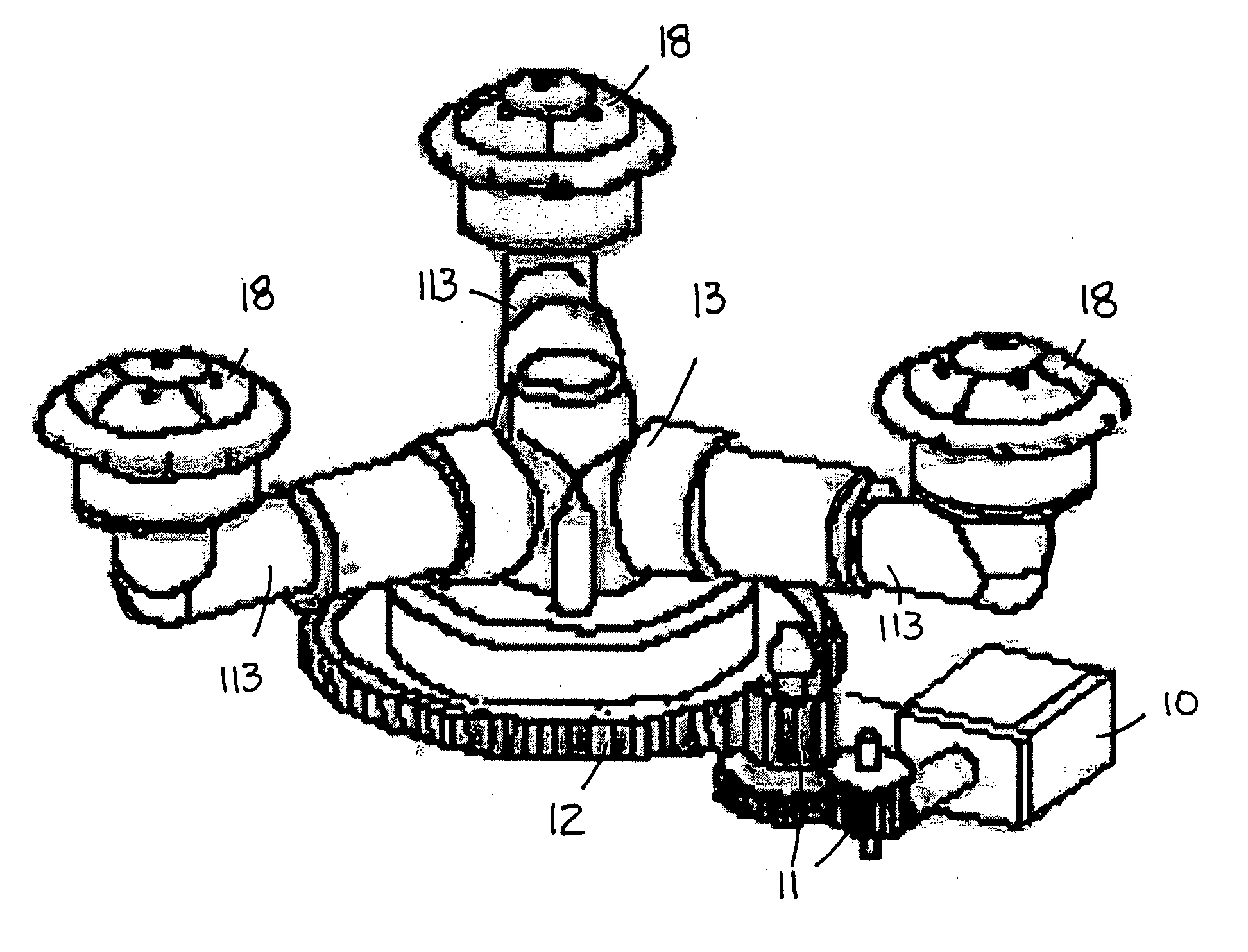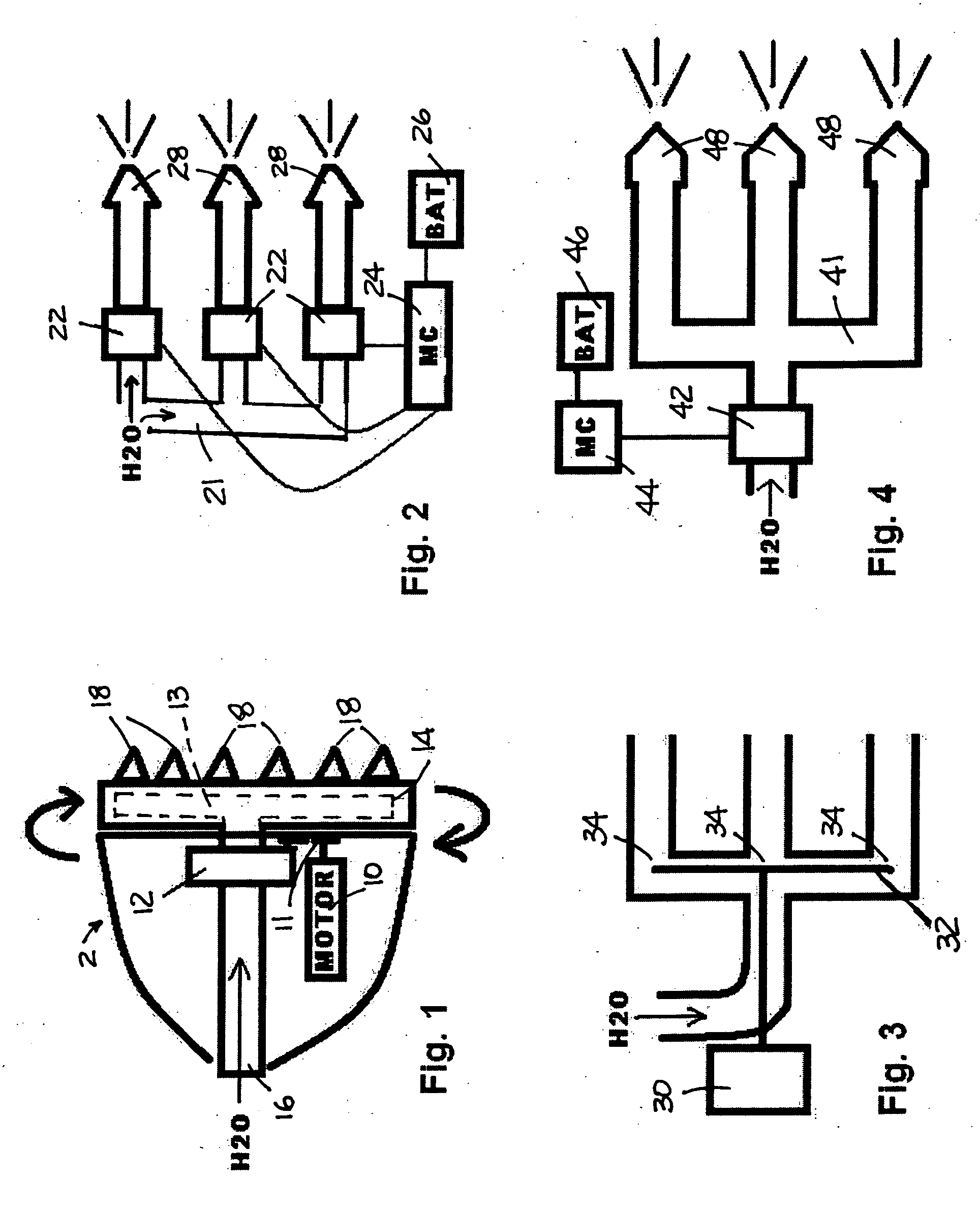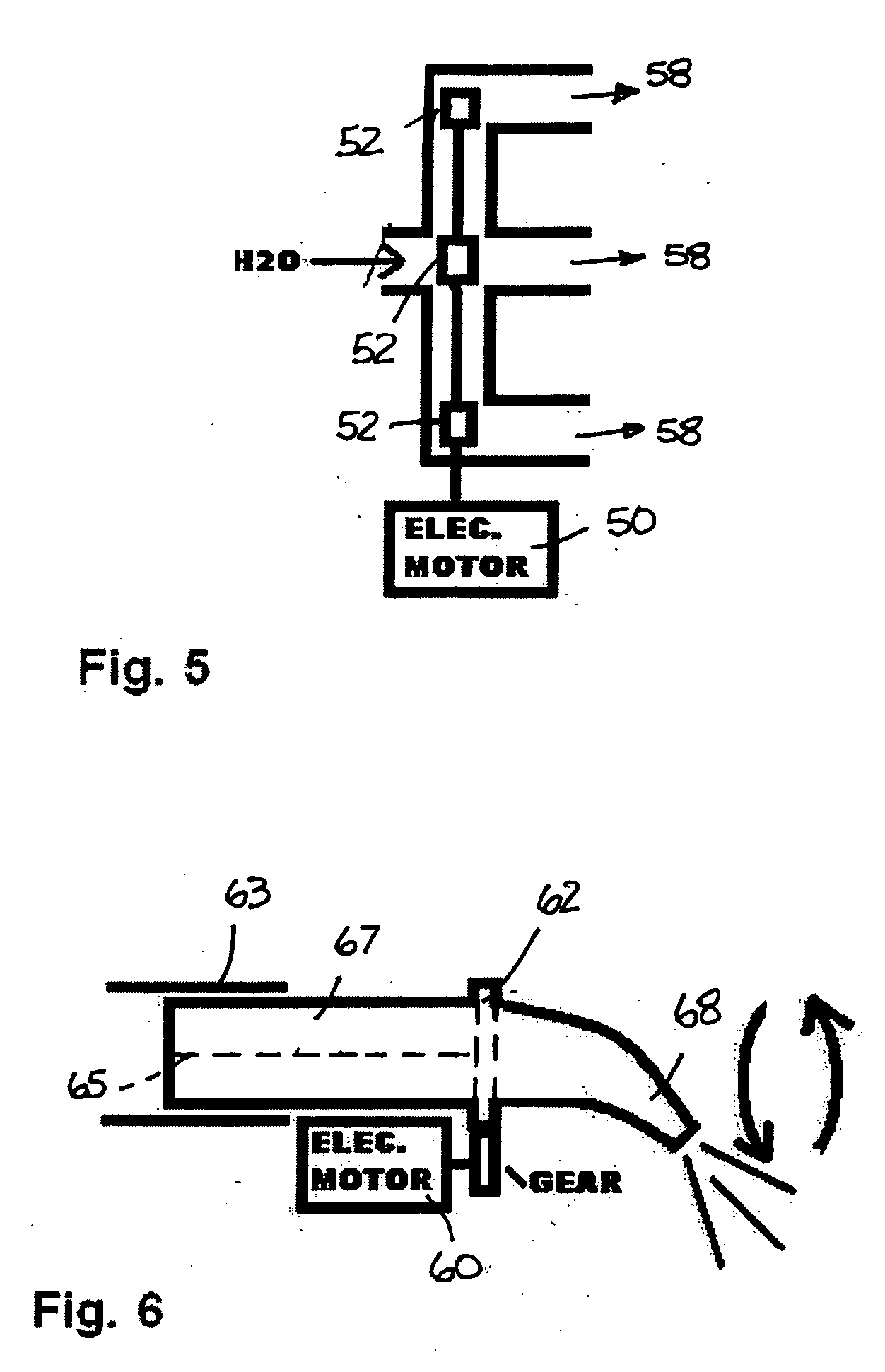Electric motor driven showerhead
a technology of electric motors and shower heads, which is applied in the direction of spray nozzles, spraying apparatuses, physical therapy, etc., can solve the problems of reducing the initial desired effect of pulsating water, reducing the time between pulses, and affecting the effect of massaging, etc., to achieve long battery life, improve massaging effect, and reduce power consumption
- Summary
- Abstract
- Description
- Claims
- Application Information
AI Technical Summary
Benefits of technology
Problems solved by technology
Method used
Image
Examples
Embodiment Construction
[0017] As illustrated in FIG. 1, a first embodiment of the inventive showerhead 2 utilizes a mini- or micro-electric motor 10 to drive, either directly or through a gear reduction, by gear 12, the face plate 14 of the showerhead causing it to rotate. As illustrated drive gear assembly 11 transfers rotational force from motor 10 to gear 12. Water is introduced through water inlet 16 and into an interior cavity or manifold 13 within face plate 14. A plurality of nozzles 18 is disposed in or on the outer surface of face plate 14 to release streams of water that rotate as manifold 13 and plate 14 rotate, producing a massaging action. In the more detailed illustration in FIG. 9, water entering through inlet 16 is directed into manifold 13 which distributes the water to nozzles 18. The manifold 13 and nozzles 18 rotate with along with face plate 14, as does the axial tube 15. Axial tube 15 is connected to inlet 16 by way of a rotating joint that permits water to flow continuously while ax...
PUM
 Login to View More
Login to View More Abstract
Description
Claims
Application Information
 Login to View More
Login to View More - R&D
- Intellectual Property
- Life Sciences
- Materials
- Tech Scout
- Unparalleled Data Quality
- Higher Quality Content
- 60% Fewer Hallucinations
Browse by: Latest US Patents, China's latest patents, Technical Efficacy Thesaurus, Application Domain, Technology Topic, Popular Technical Reports.
© 2025 PatSnap. All rights reserved.Legal|Privacy policy|Modern Slavery Act Transparency Statement|Sitemap|About US| Contact US: help@patsnap.com



